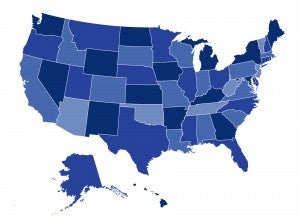
By Justin Giovannelli and Emily Curran
Since President Trump’s election, the Affordable Care Act (ACA) and marketplaces have faced an uncertain future. The president has sought to repeal the ACA on numerous occasions, while the administration has made regulatory and other implementation changes and reduced the funding that supports the marketplaces. These decisions have all affected how the law operates in practice and have had serious repercussions across the country. However, the impact has not been uniform. It has varied, in part, based on the choices state policymakers have made in implementing the ACA — including whether to run their own exchange.
To understand how states on the forefront of health reform perceived and responded to federal policy changes and political uncertainty in 2017, we interviewed leadership staff of 15 of the 17 state-run marketplaces. These marketplaces generally exert greater control over their insurance markets and can tailor their portals to suit local needs.
Overwhelmingly, the state-run marketplaces interviewed suggested that federal administrative actions and repeal efforts created confusion and uncertainty in 2017 that negatively affected their markets. While the state-run marketplaces used their broader authority to reduce consumer confusion and promote stable insurer participation, their capacity to deal with federal uncertainty remains limited and respondents stated that long-term stability will require a reliable federal partner.
To learn more about how the state-run marketplaces fared in 2017, visit the Commonwealth Fund here.

